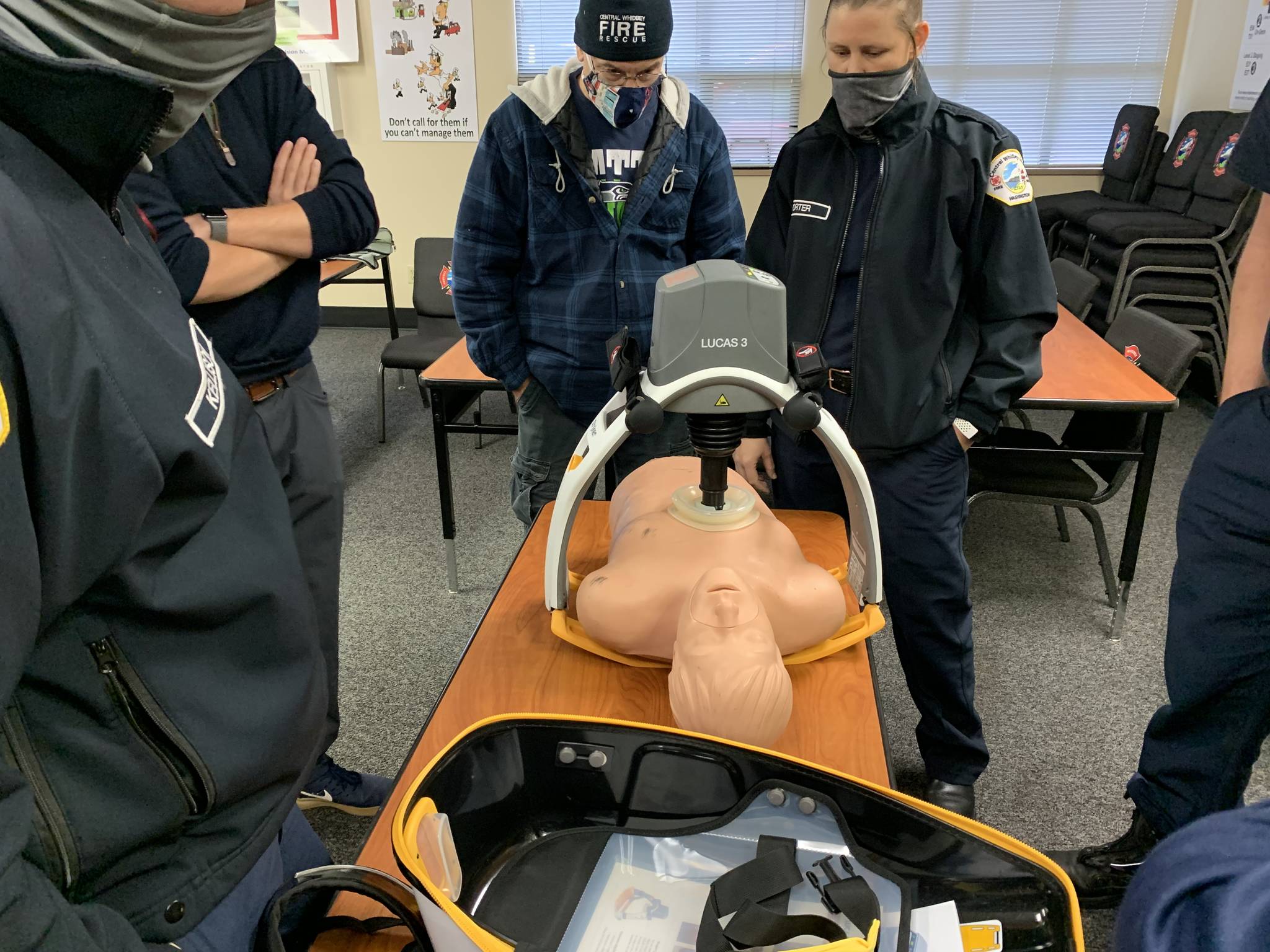Chief Ed Hartin of Central Whidbey Island Fire and Rescue is hoping the power of the internet and the generosity of the community will allow him to buy a tool that will improve patient outcomes in cardiac arrest calls.
The fire agency is looking to crowdfunding for the $18,580 needed to buy a LUCAS 3 chest compression system, which is an automated, life-saving CPR device that helps crews in the field.
The agency is also looking for grant money.
Hartin has known about the LUCAS tool for several years because his former colleagues in Oregon were using one with some success.
A recent call to help a 16-year-old girl who went into cardiac arrest after an ATV accident prompted the fire chief to seek it with renewed urgency.
The four-person crew had to do CPR and chest compressions for 90 minutes in a remote area on Whidbey and the LUCAS tool would have been helpful, he said.
One of the challenges of CPR is moving the patient because it means crews often must stop chest compressions, Hartin explained.
First responders try to move the patient using 10-second intervals so the interruption doesn’t halt progress.
He compared doing CPR to pushing a car uphill. It’s important for crews to maintain continuous chest compressions so they do not lose any progress, similar to how a person must keep pushing the car uphill until they get to the top.
“If you stop pushing, the car will roll down the hill,” he said.
After stopping compressions for 10 seconds, the first responders will start compressions for two minutes, and the process happens again until the patient is moved downstairs, across a beach or off a trail and into the ambulance.
The crew rotates to give each person a break to maintain quality compressions.
If the crew can’t move the patient within the 10-second window, “the car rolls farther downhill,” Hartin said, using the same analogy from earlier. Progress gets lost.
Hartin said the LUCAS tool would help maintain continuity of compressions, especially during times when crews have to do CPR for a long time or need to move the patient from a remote area.
The first responders would still begin with manual chest compressions if they had the tool.
If the patient did not respond positively to the first automated external defibrillator attempt, then the crew would use the LUCAS tool, or as needed in other situations. It can also be used during the ambulance ride to the hospital and improves the crews’ safety.
A video of the tool being used can be found on the GoFundMe page.
“The advantage of this type of device is that it doesn’t get tired,” he said.
The fire agency has turned to crowdfunding efforts so it doesn’t need to use existing budget, which would lead to increased property taxes, Hartin said. The goal is to buy it within six months.
“We’re coming at this from a few different angles,” he said.
Central Whidbey Island Fire and Rescue’s GoFundMe campaign can be found on the agency’s Facebook page or at www.gofundme.com/f/lucas-3-chest-compression-system.



